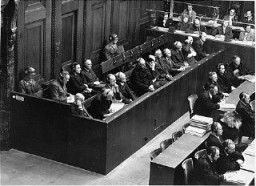You searched for: 亚马逊商城快速搭建【TG���������@EK7676】平台包网搭建亚马逊商城快速搭建【TG���������@EK7676】平台包网搭建4d8SzGeGiu
<< Previous | Displaying results 1-10 of 271 for "亚马逊商城快速搭建【TG���������@EK7676】平台包网搭建亚马逊商城快速搭建【TG���������@EK7676】平台包网搭建4d8SzGeGiu" | Next >>
-
Subsequent Nuremberg Proceedings, Case #4: The Pohl Case
ArticleThe Pohl Case was Case #4 of 12 Subsequent Nuremberg Proceedings against leading German industrialists, military figures, SS perpetrators, and others.
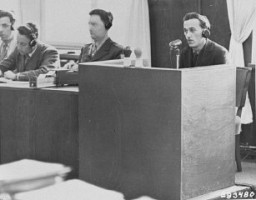
-
Page 4 of International Military Tribunal program
ArtifactFourth page of a list of defendants at the International Military Tribunal at Nuremberg. This material appears in a mimeographed program booklet distributed at the IMT. This page includes: Hjalmar Schacht, Karl Dönitz, Baldur von Schirach, Fritz Sauckel, and Albert Speer, along with brief biographical information for each.
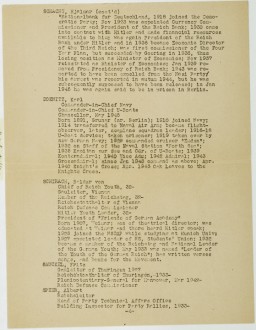
-
Page from volume 4 of a set of scrapbooks documenting the German occupation of Denmark
ArtifactPage from volume 4 of a set of scrapbooks compiled by Bjorn Sibbern, a Danish policeman and resistance member, documenting the German occupation of Denmark. Bjorn's wife Tove was also active in the Danish resistance. After World War II, Bjorn and Tove moved to Canada and later settled in California, where Bjorn compiled five scrapbooks dedicated to the Sibbern's daughter, Lisa. The books are fully annotated in English and contain photographs, documents and three-dimensional artifacts documenting all…
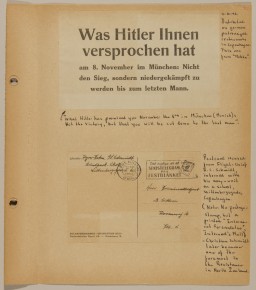
-
Edward Vebell courtroom sketch
ArtifactCourtroom sketch drawn during the International Military Tribunal by American artist Edward Vebell. The drawing's title is "A few studies of the German defense counsel." 1945.
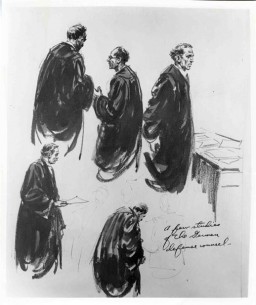
-
Deportation from the Warsaw ghetto
PhotoDeportation of Jews from the Warsaw ghetto during the uprising. This photo was taken secretly from a building adjacent to the ghetto by a Polish member of the resistance. Warsaw, Poland, April 1943.
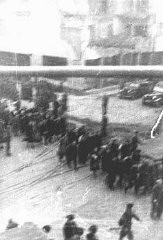
-
The Times, August 17, 1921
ArtifactIn this London Times article, reporter Philip Graves compared passages from Maurice Joly’s Dialogue in Hell Between Machiavelli and Montesquieu (1864) side-by-side with the Protocols of the Elders of Zion in order to prove that the Protocols was plagiarized. Other investigations revealed that one chapter of a Prussian novel, Hermann Goedsche’s Biarritz (1868), also “inspired” the Protocols. Times (London), August 17, 1921.
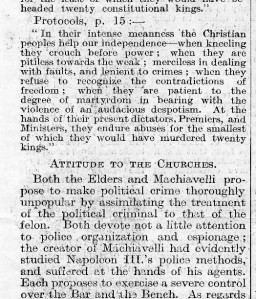
-
Matchbox cover with Japanese propaganda illustration
ArtifactDuring the war the Japanese flooded Shanghai with anti-American and anti-British propaganda, including this image from a matchbox cover. It depicts a Japanese bomb landing in the United States heartland and knocking the stars off the U.S. flag. Shanghai, China, between 1943 and 1945. [From the USHMM special exhibition Flight and Rescue.]
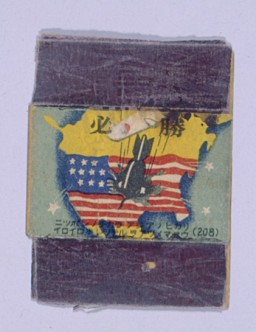
-
Jews captured during the Warsaw ghetto uprising
PhotoSS personnel capture two Jewish resistance fighters who were pulled from a bunker during the suppression of the Warsaw ghetto uprising. Warsaw, Poland, April 19-May 16, 1943.
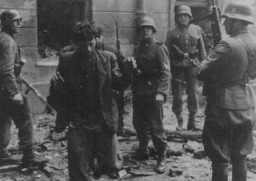
-
International Military Tribunal: The Defendants
ArticleListing of the 24 leading Nazi officials indicted at the International Military Tribunal at Nuremberg. Learn about the defendants and the charges against them.

-
Subsequent Nuremberg Proceedings, Case #3: The Justice Case
ArticleThe Justice Case was Case #3 of 12 Subsequent Nuremberg Proceedings against leading German industrialists, military figures, SS perpetrators, and others.
